
Google’s Pixel 9 Pro Fold is only the company’s second attempt at a foldable, but it’s a stunning improvement over the first, and quite possibly the foldable you’ve been waiting for this whole time.
Hardware & Displays |
This is the best foldable hardware most people can buy
Last year’s Google Pixel Fold was the company’s first attempt at a foldable and, in many ways, it was an impressive one. Google, on its first try, built a foldable with premium hardware that was a bold first step. As brought out in our long-term review recently, though, it didn’t age very well. At all. The hinge never unfolds flat, the inner display was a mess, the whole package was too heavy, and the Tensor chip left it constantly overheating.
With the Pixel 9 Pro Fold, the poorly named sequel to the Pixel Fold, Google has addressed all of those issues, and that starts with the main hardware.
Pixel 9 Pro Fold is a truly incredible year-over-year improvement. The new design is remarkably thin at just 10.5mm thick when folded. This leads to a device that, when folded, just feels like a normal smartphone. In talking about foldables with some friends who have never used them, thickness came up regularly, but they were shocked to find that the 9 Pro Fold was often thinner than their current phone in a case (even with the Fold in Google’s case).
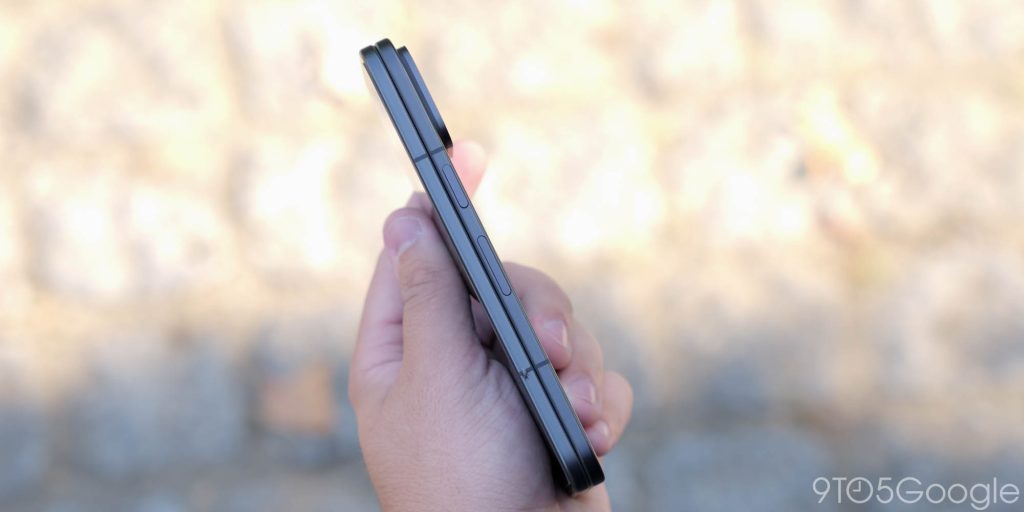
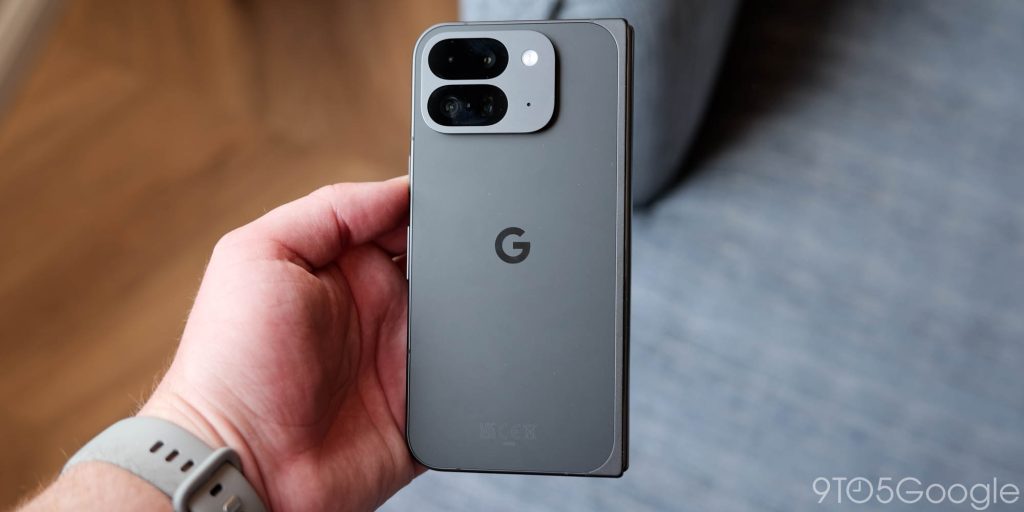
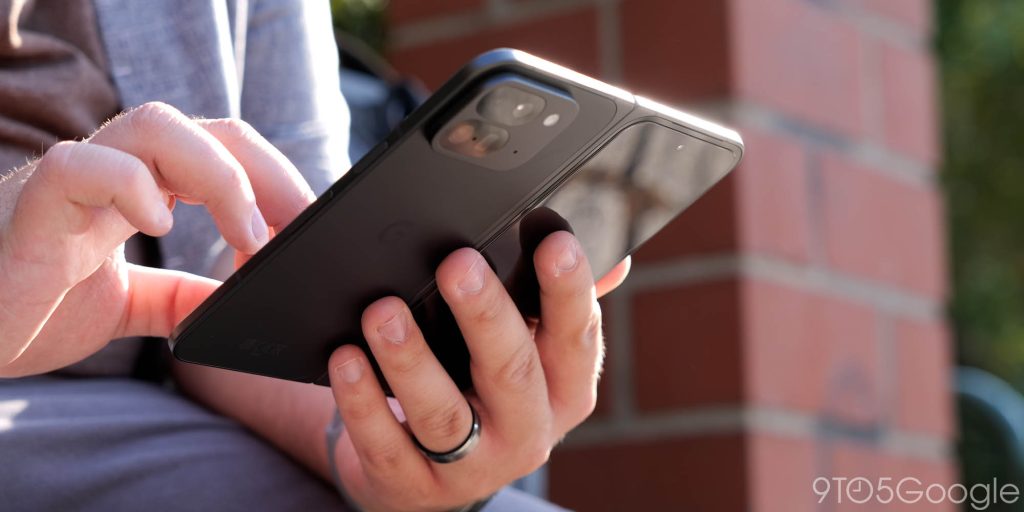
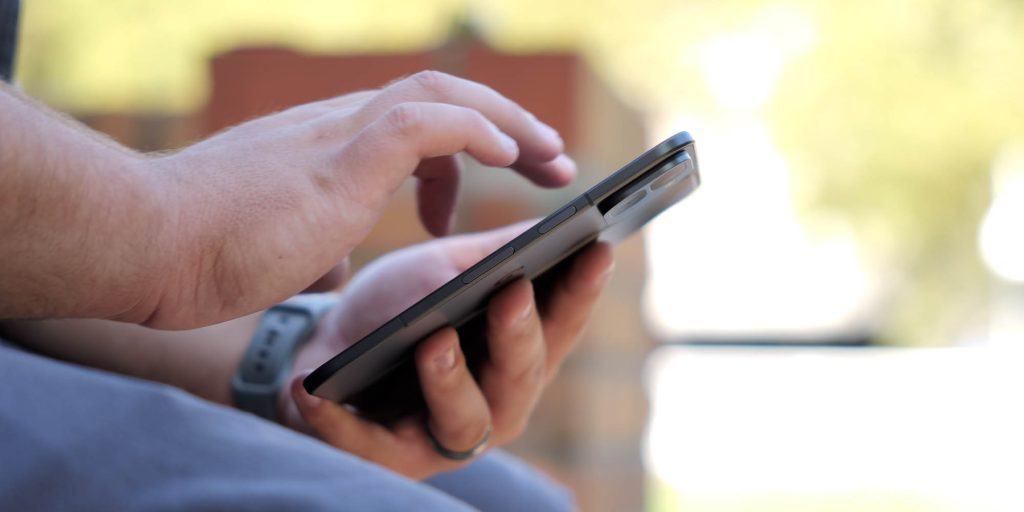
That thinness isn’t just a party trick either. It results in the Fold being more comfortable in my pocket, especially combined with the weight that’s been shed from the previous generation. The 9 Pro Fold weighs in at 257g, only 25g heavier than the Samsung Galaxy S24 Ultra. It’s still heavier than some other foldables but, personally, I’ve never really found that to be an issue. In fact, I find the heft to be a bit reassuring when the device is open. This is very much something that you’ll either be fine with, or can’t bear, but it’s a complete non-issue to me. Even if it does feel heavier than your last phone, you’ll probably stop noticing within a few hours of use.
The hardware design is also incredibly well done. The matte side rails are grippy for opening and closing the device, and I’m glad they’re combined with a matte glass panel on the back unlike the rest of the Pixel 9 series, where at least one of those will be glossy/polished. I’m a big fan of the “Porcelain” color variant, but the “Obsidian” black I ended up spending most of my time with has grown on me.
The camera bump on the back is also rather tame, though I’m still not sure how I feel about the look. The two-row design is weird to see on a modern Pixel, and I much prefer how last year’s Fold looked in this regard, but it’s also not a bad look on its own. It’s far better than the honking circular camera mountain jutting out of the back of the OnePlus Open, and I call that a huge win.
Pixel 9 Pro Fold’s hardware really holds up well against the competition too, a challenge that Samsung’s Galaxy Z Fold 6 fails miserably at. In the US, I’d argue that this is truly the best you can get, as the Fold 6 still makes a lot of compromises on the phone side, while the OnePlus Open’s giant camera bump is off-putting. Google also benefits from a range of accessory partners, with cases and screen protectors being widely available already, while the OnePlus Open still has very few options even a year later.
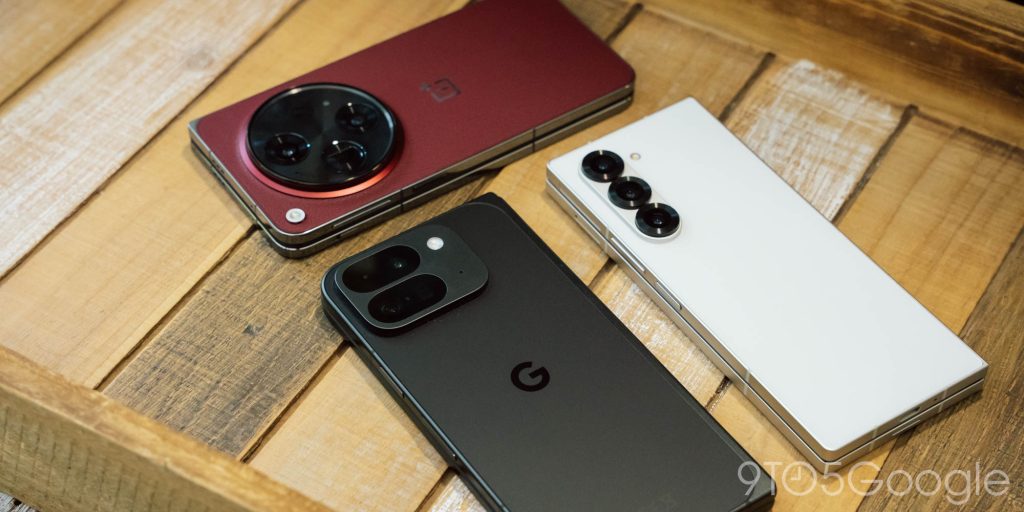
But, as with any foldable in the US, the asterisk is that you’ll find better hardware outside of the States. A great example is the Honor Magic V3 which recently launched throughout Europe and other countries. The absurdly thin foldable is over a millimeter thinner than Pixel 9 Pro Fold while still packing a much bigger battery and better camera hardware, as we looked at in a recent comparison. Even against that device, though, I think Google’s efforts hold their own.
One big question surrounding the Pixel 9 Pro Fold’s hardware is how long it will last. Google is supporting this device with the same 7 years of updates as the rest of the lineup, but foldables have a tendency to age a little less gracefully. However, I do think that Google’s efforts here shine, and this feels like a foldable that can last longer than most – as long as you don’t sit on it, apparently.
As with any foldable, I consider it a firm requirement to purchase insurance with the device and to factor that cost in. On the Google Store in the US, Preferred Care costs $15/month or $279 for two years. That covers drops, broken screens, and more with low deductibles. A broken screen, Google says, will cost $29 to fix (up to twice a year) under the plan, while more advanced repairs may cost $129.
Stunning displays, divisive aspect ratios
The Pixel 9 Pro Fold, like every book-style foldable, has two displays. The outer display this year is a 6.3-inch FHD+ panel that’s basically ripped out of the base Pixel 9. That’s to say it’s sharp enough, very bright, and a good size. The bezels and frame make the overall hardware feel bigger than the Pixel 9 and Pixel 9 Pro, but just barely. Thanks to the thin profile, using the Pixel 9 Pro Fold’s outer display just feels like using a normal phone.
Compared to the original Pixel Fold, which had a short and wide aspect ratio, the 9 Pro Fold’s outer display makes you feel more at home because it’s not all that unique. It’s just normal. I have mixed feelings about that, though. On the one hand, there are no surprises on this display. Apps work as you’d expect and there’s no impact to usability whatsoever. And my usual pitch for Samsung’s narrow aspect ratio doesn’t apply here because the Pixel 9 Pro Fold is so thin.

It’s almost weird to finally have a foldable with an outer display that’s not affected by the fact that it’s a foldable, but here we are, and it’s been pretty great.
Meanwhile, there’s the inner display, which is a mixed bag.
In many ways, the Pixel 9 Pro Fold’s inner display is an unquestionable win over the previous generation. The display crease is much smaller, being a crease rather than a canyon running down the center of the display. The panel is also much brighter this year, making outdoor usability actually possible, and on par with a normal phone’s display. I directly found this brightness handy on a long layover earlier this month where the Pixel 9 Pro Fold held up great for watching content even in the bright Newark United Club.
But it’s not quite perfect.
I noticed that the display crease has some weird bumps that are seemingly just a part of the device (I’ve noticed it across multiple units). Harmless, but strange. The inner display is also still too reflective. It’s certainly improved from the first generation, but it’s still more reflective than the Galaxy Z Fold 6, and frankly every foldable looks bad in this regard after using the OnePlus Open.
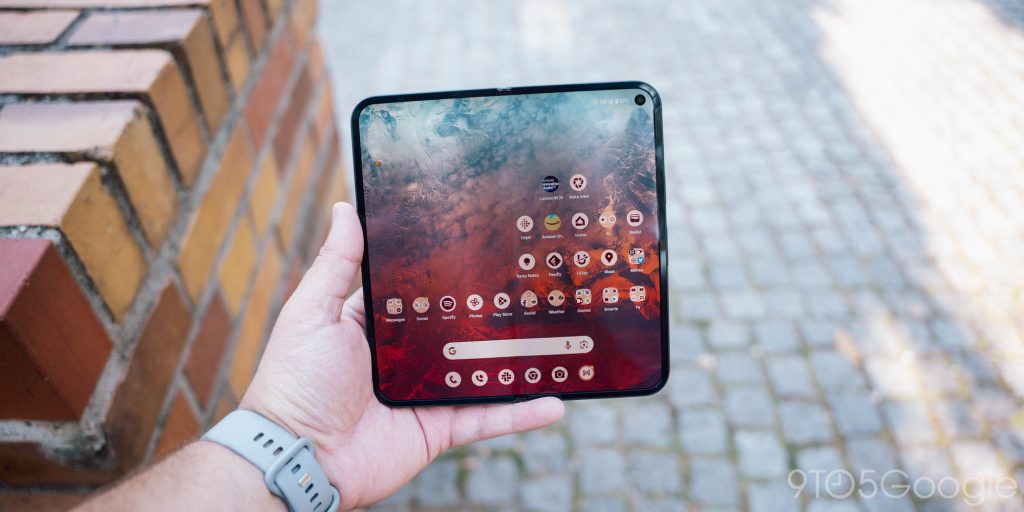
The aspect ratio of this inner display is also a choice between two paths. Gone is the super-wide display of the original, instead with a near-square design that’s slightly taller than it is wide. This has software implications, as we’ll get to shortly, but it also affects the hardware itself. I’ve found that the benefit of this design is that the inner display is much easier to handle and to type on because it’s not so wide, but it’s also worse for watching media. Google also removed the thicker top and bottom bezels which is visually pleasing, but takes away what was a nice way to hold the device one-handed.
Personally, I’m happy with the choices Google made with this new generation of a foldable Pixel, but that’s my opinion. For those who came to love the wider Pixel Fold design, I totally get it. There were many benefits, but also a lot of downsides. It would have been nice if Google stuck to that original concept, but this design plays nicer with both the software, overall, and the hardware.
Software & Performance |
The Pixel experience is wonderfully simple, but is it enough for a foldable?
The experience of using a Google Pixel smartphone is one that’s smart and simple, and the Pixel 9 Pro Fold is no exception. Android 14 is available out of the box on this device with 7 years of updates to follow, and it’s largely the same you’ll find on the rest of the Pixel 9 series. Plenty of AI smarts are found on top of what is, at its core, a clean and easy-to-use smartphone experience.
For more on that, go check out our Pixel 9 Pro review. The question to answer here is how that experience scales up to a foldable.
On the bright side of things, I think the Pixel 9 Pro Fold is the simplest foldable to understand. Google’s experience emphasizes just getting more screen real estate out of your phone. When closed up, you’ve got a normal device, and everything works the same on the inside. Your homescreen has the same layout, just showing two panes at once. The Quick Settings panel shows the same shortcuts, just without needing to swipe twice because notifications are shown off to the right side. The Settings app shows two panes, as do many other apps.
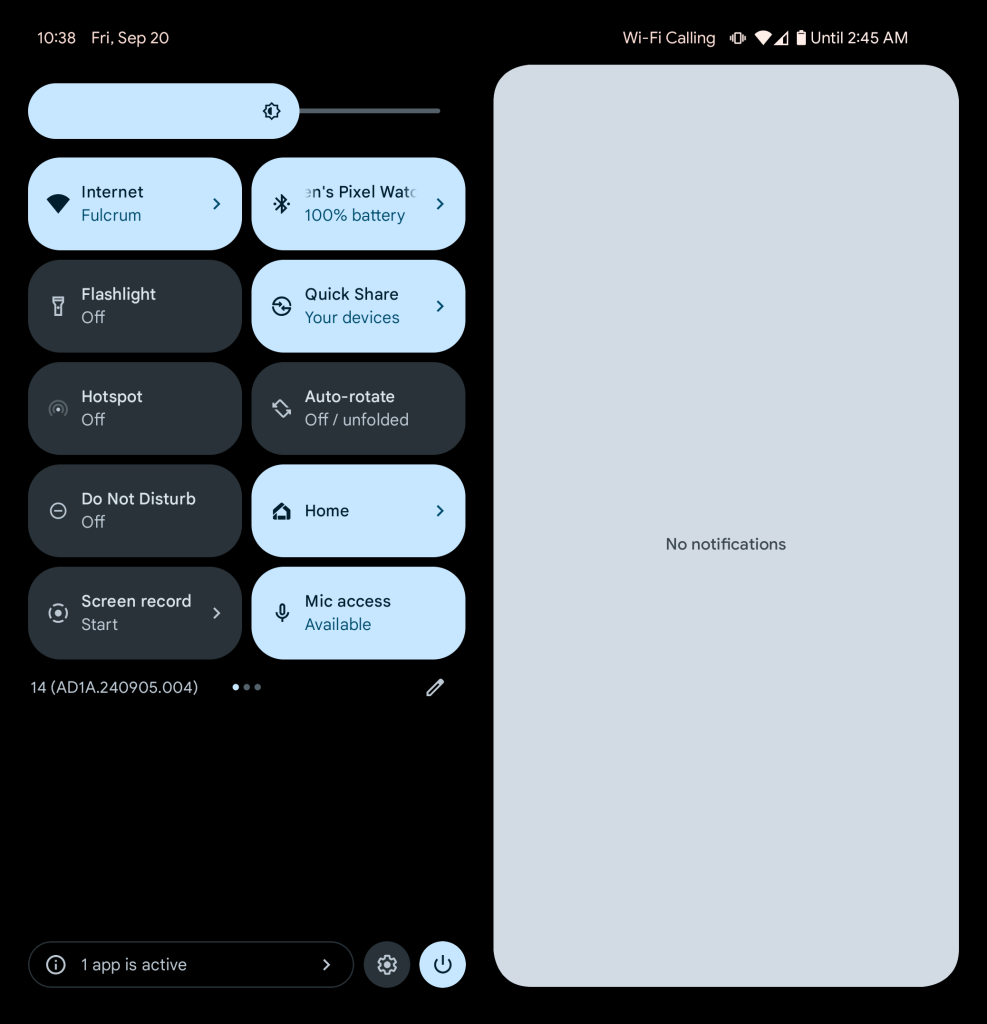
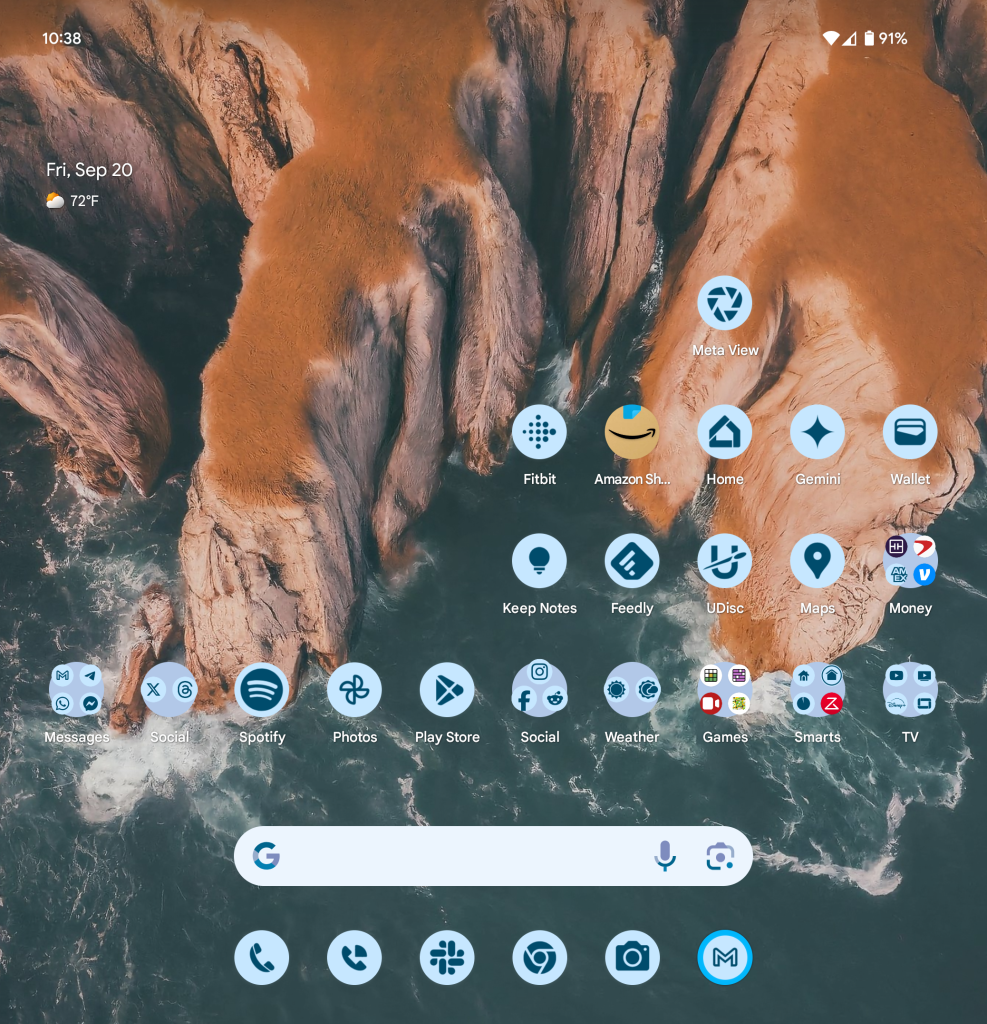
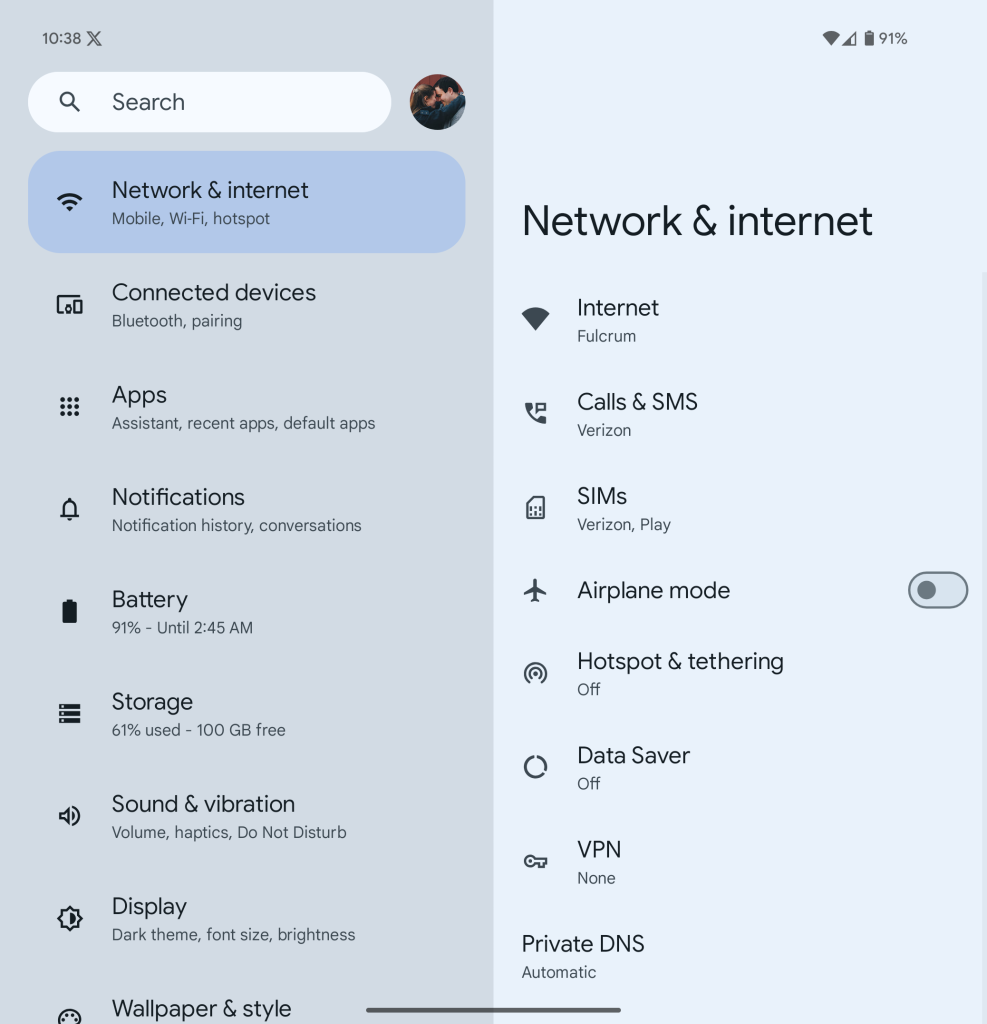
But on the other hand, there’s a lot that Google isn’t doing with that added screen size.
Android has, for years, supported split-screen multitasking with two apps at once, and that’s all the Pixel 9 Pro Fold can do too. That’s while other foldables are pushing that numbers to at least three, if not pushing it well beyond. Samsung, for example, doesn’t really have a limit in how many apps you can show at once in One UI. On the Fold 6, you can show three apps in panes with a few more in pop-up windows. That’s useful from time to time, but nine times out of ten, I’m just using two apps anyway, so I’m perfectly content with the 9 Pro Fold’s implementation.
Something new this year too is the ability so “save” a pairing of apps to the homescreen for quick access. It’s a useful trick, absolutely, but one I didn’t find myself using as I usually find split-screen to be a spur-of-the-moment sort of thing rather than something I plan out.
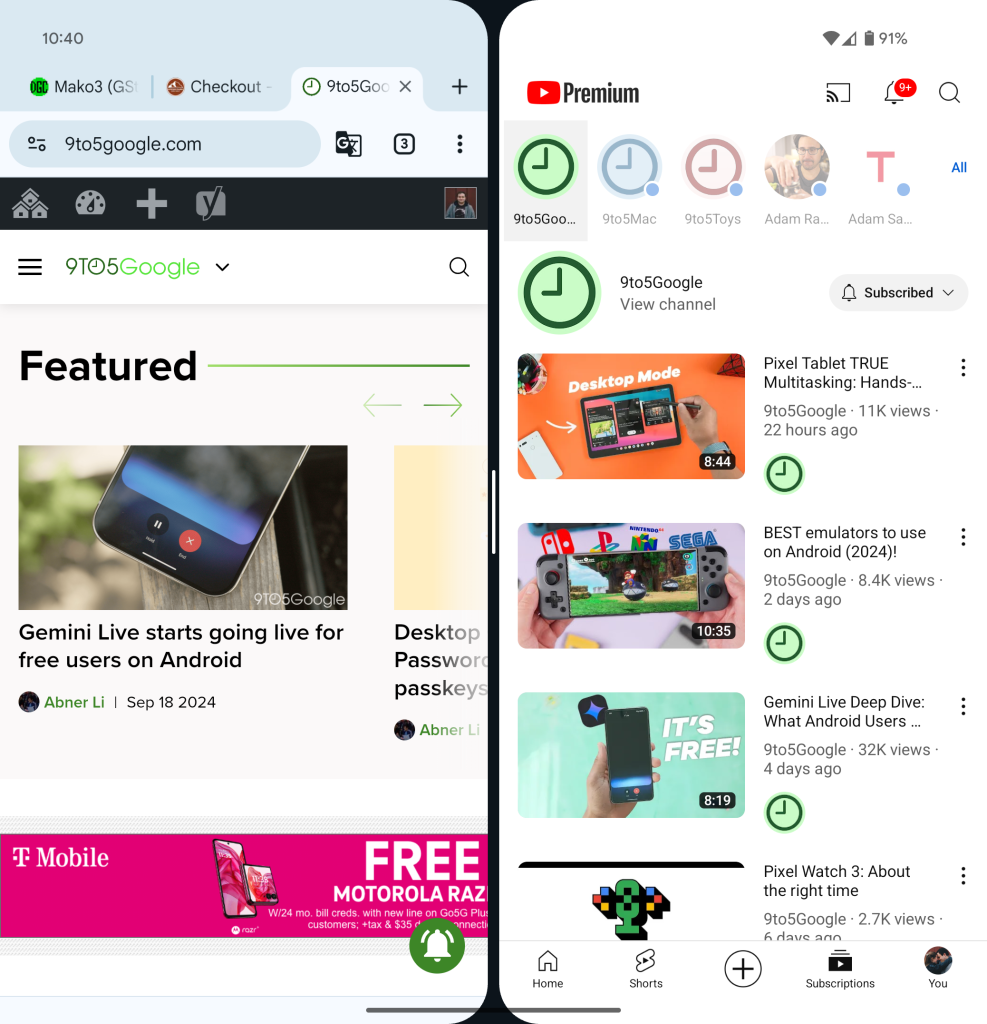
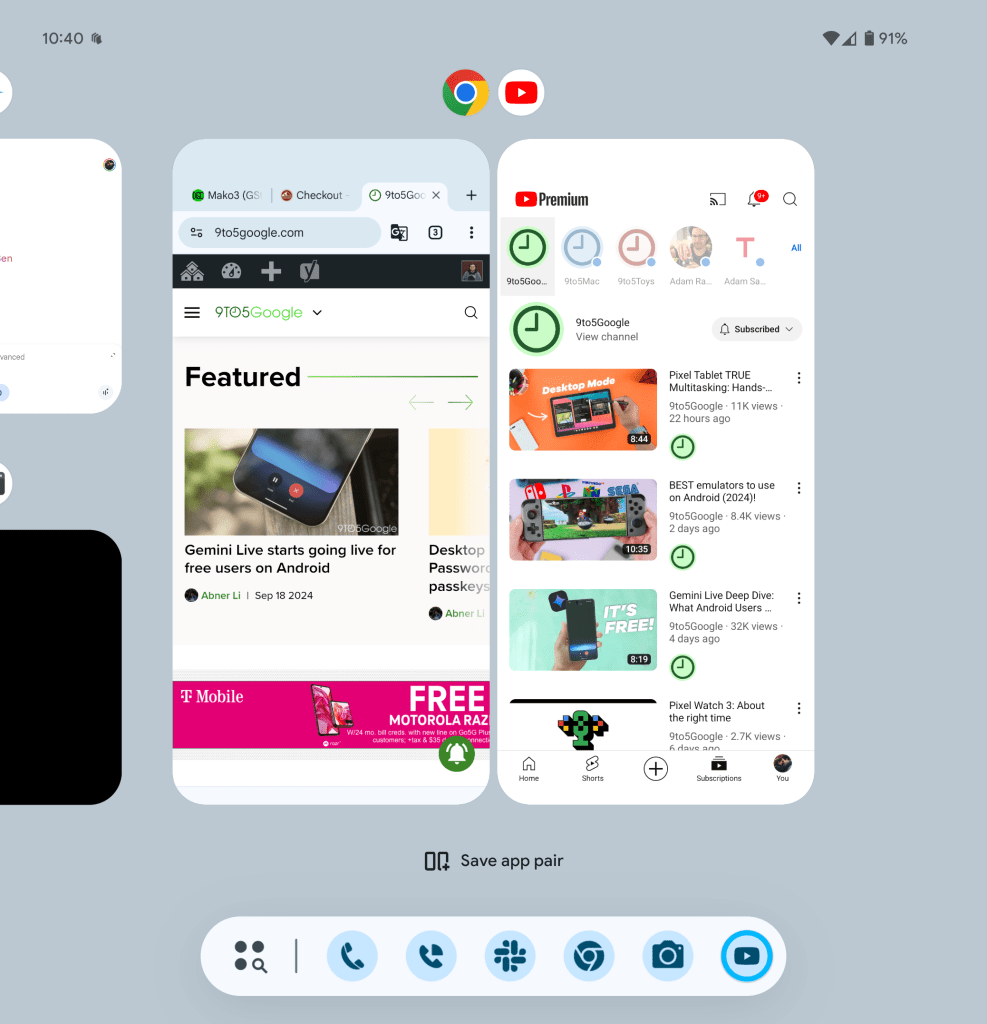

Google also uses the form factor in some interesting ways, like leveraging the outer display for Google Translate (in a new and improved method of access), for showing a Google Meet call on both the inner and outer screens at the same time, and a “Made You Look” feature that shows cartoon characters on the outer display to keep a child’s attention while you take a picture. Neat stuff, at least to the right person.
The double-edged sword of tablet apps and the lack thereof
The biggest software hiccup I’ve noticed is that, as a result of this new inner display aspect ratio, many of the wonderful tablet optimizations from the first-gen Pixel Fold are gone. Gmail and so many other apps – Reddit, Facebook, Threads, and Discord being examples that spring to mind – end up either stuck into their phone layouts on the inner display’s “portrait” aspect ratio or aren’t as optimized on this new setup.
That’s become the inner display this year is very close to a 1:1 aspect ratio, very close to a square. It’s just 5mm taller than it is wide, which means you don’t get much added space from rotating the device into “landscape.” In real life, that separation shouldn’t matter, but some apps don’t really care. Because the device is “in portrait,” some apps just act like your phone is really wide.
Google is not failing across the board here. Plenty of apps do use tablet layouts in “portrait,” like Google Home, Messages, and the Pixel Weather app. And there are other third-party apps that are doing well too, such as Accuweather (which doesn’t trigger a tablet layout on Galaxy Z Fold 6), Instagram, and Spotify.
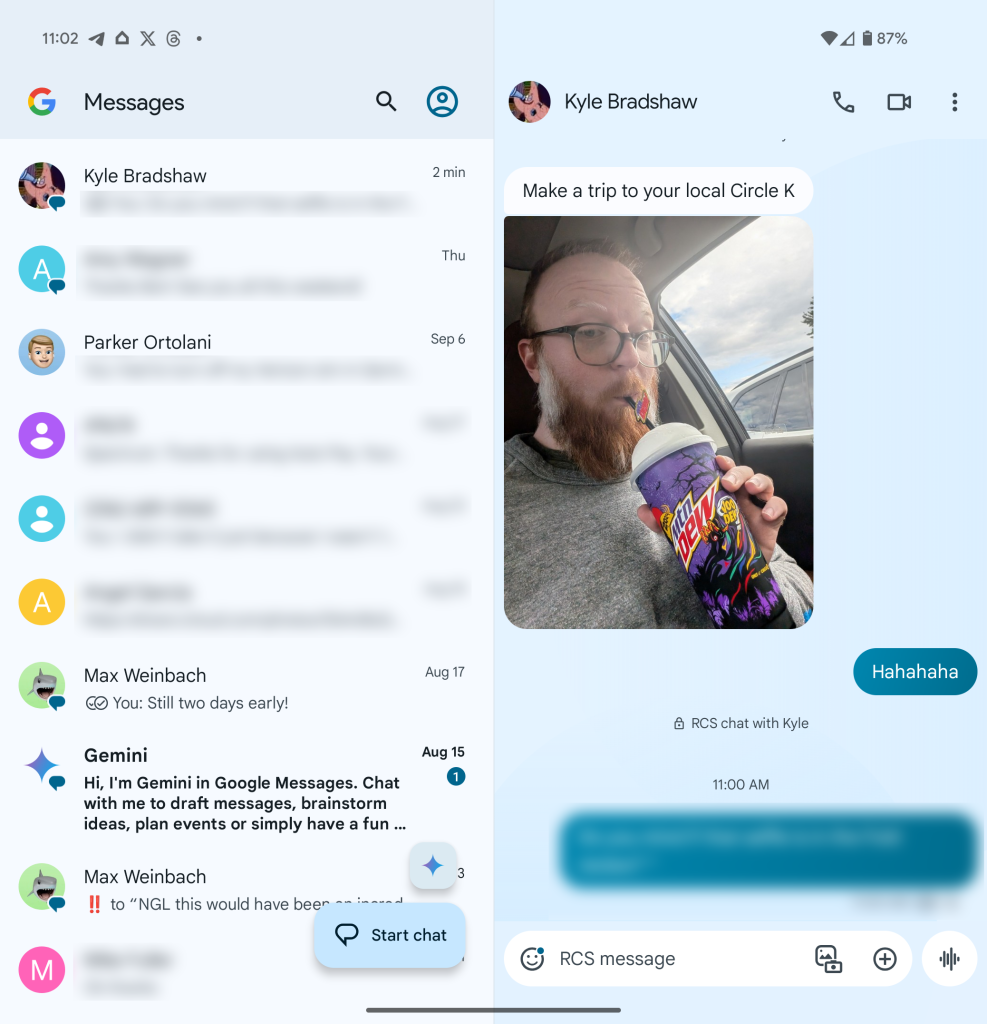



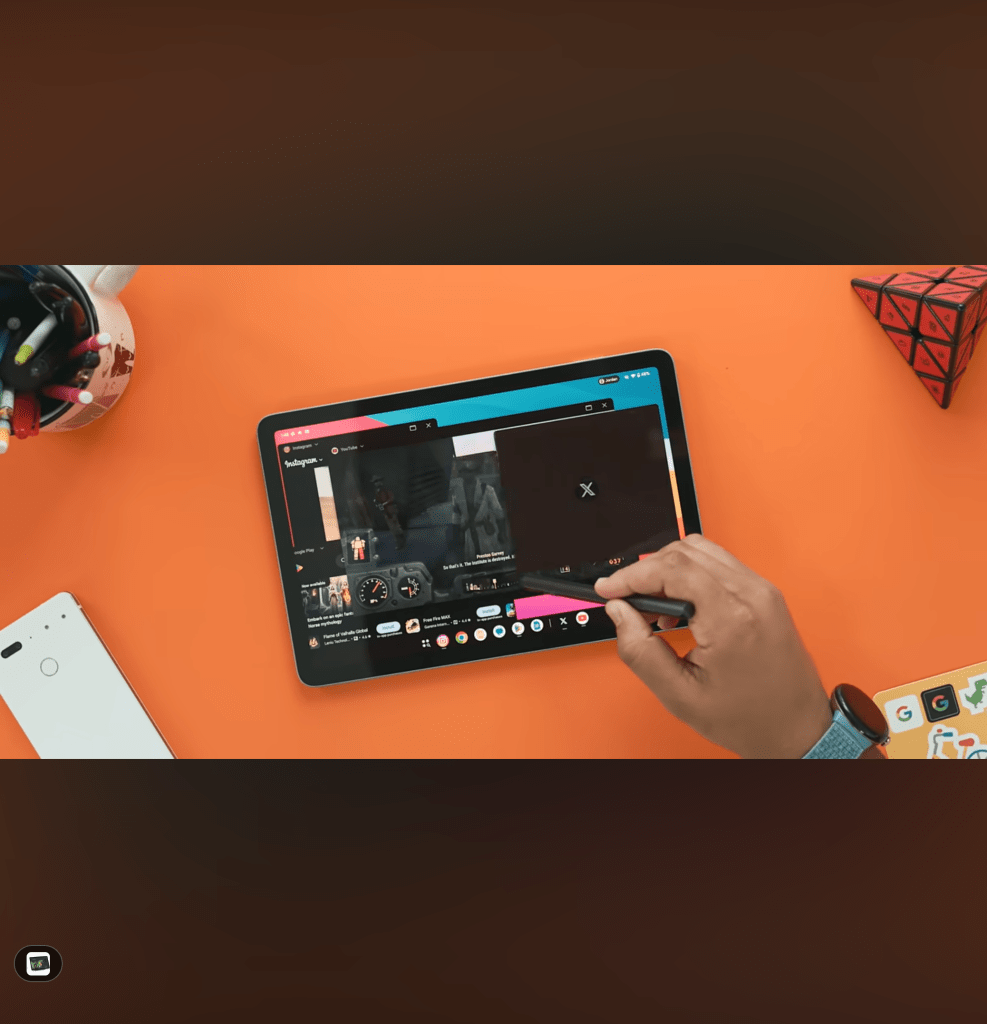

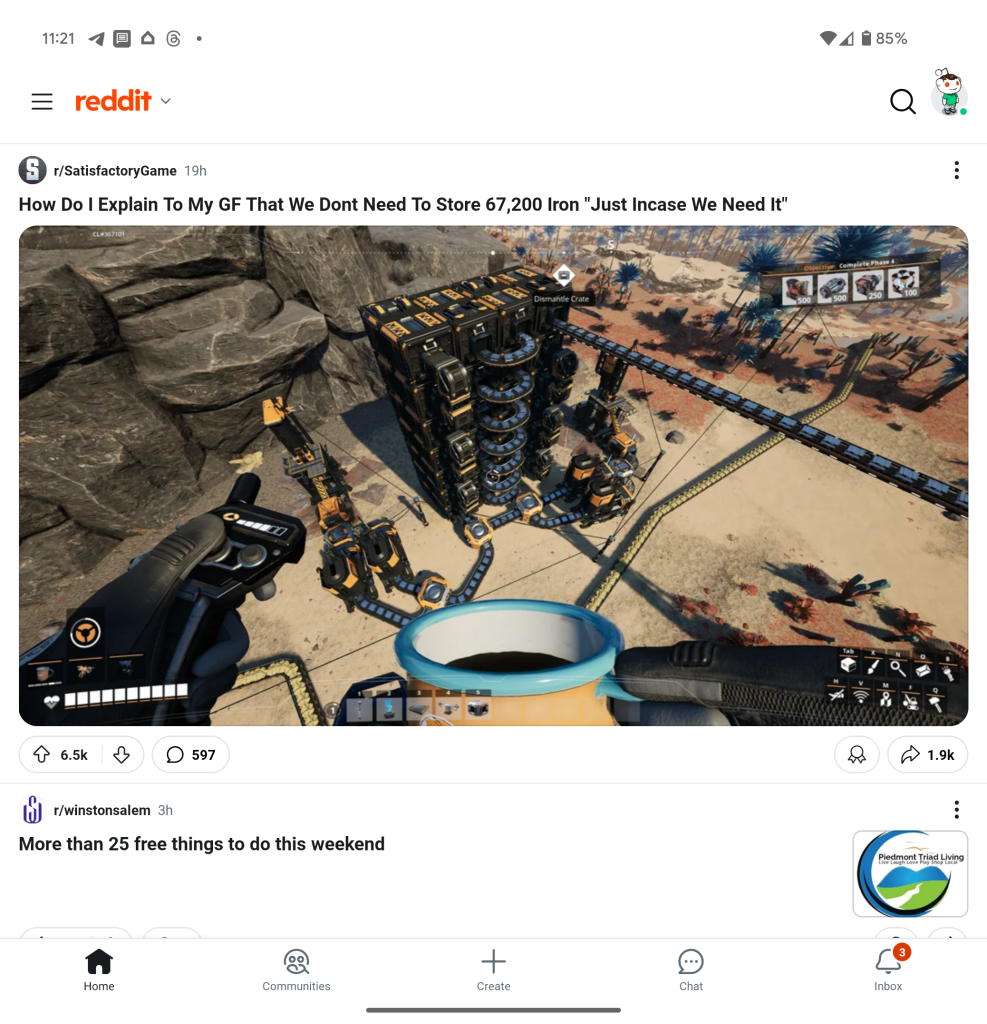
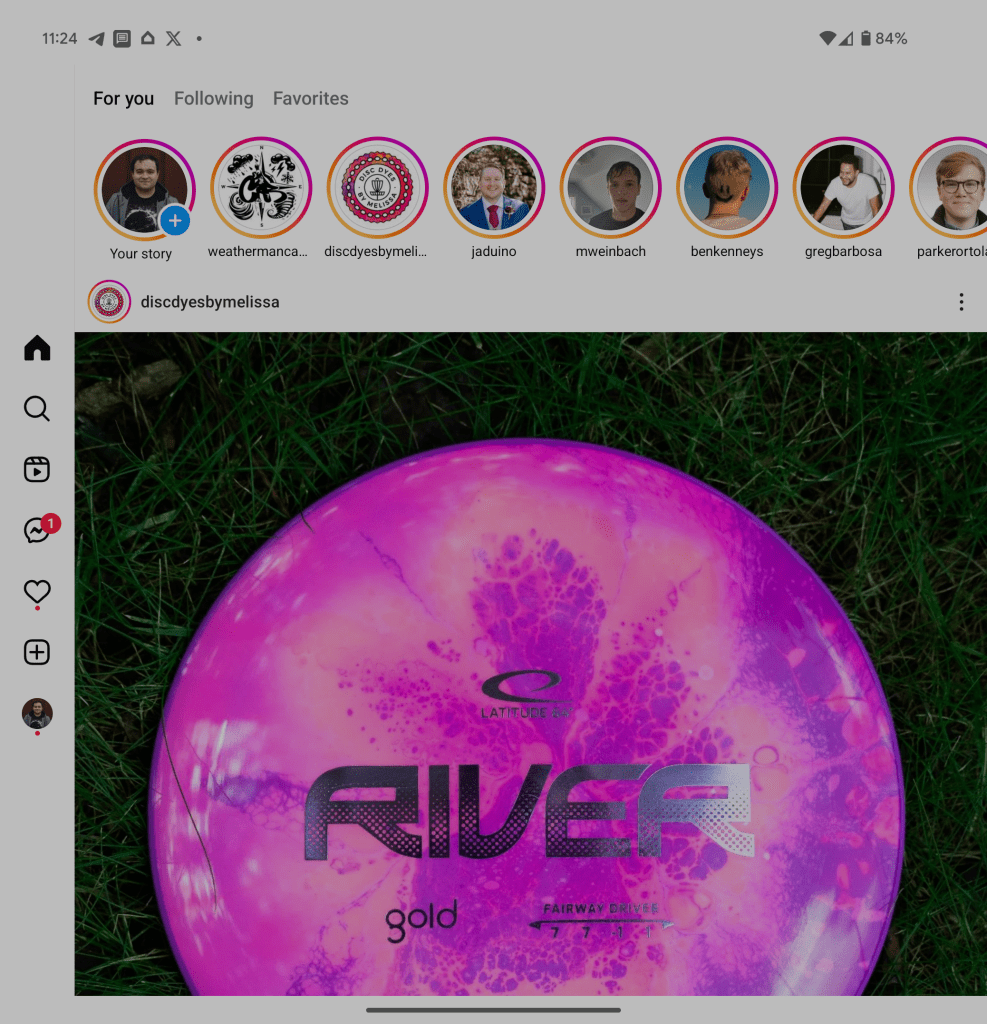

It’s really frustrating!
This is especially maddening because some apps simply don’t care about this difference. Games like Fall Guys just work on that “portrait” layout, and YouTube can still show a fullscreen video this way too. On a device like this, that’s how it should work. No matter which way the user holds the phone, there shouldn’t be a difference in the app layout because, to the user’s own eye, the difference is basically not there.
I’m sure Google can address this through software, hopefully through a system OTA versus a million app updates that will take months to roll out.
Tensor G4 is an incredible leap forward (even if it’s still behind)
My biggest problem by far on the original Pixel Fold was a quickly overheating Tensor G2 processor, but Tensor G4 is a drastic improvement.
Combined with 16GB of RAM, the Pixel 9 Pro Fold is a fast and fluid smartphone throughout the whole experience. Everything runs stutter-free and without any notable problems. The phone also rarely heats up and, when it does, it only gets to a certain point before just settling into a warm state. That’s a far cry from the original Pixel Fold’s dreadful surface-of-the-sun heat that would kick in for no obvious reason. Even while running sessions of Fall Guys on the Pixel 9 Pro Fold, the device just doesn’t get very warm, at least no warmer than any other foldable I’ve used recently.
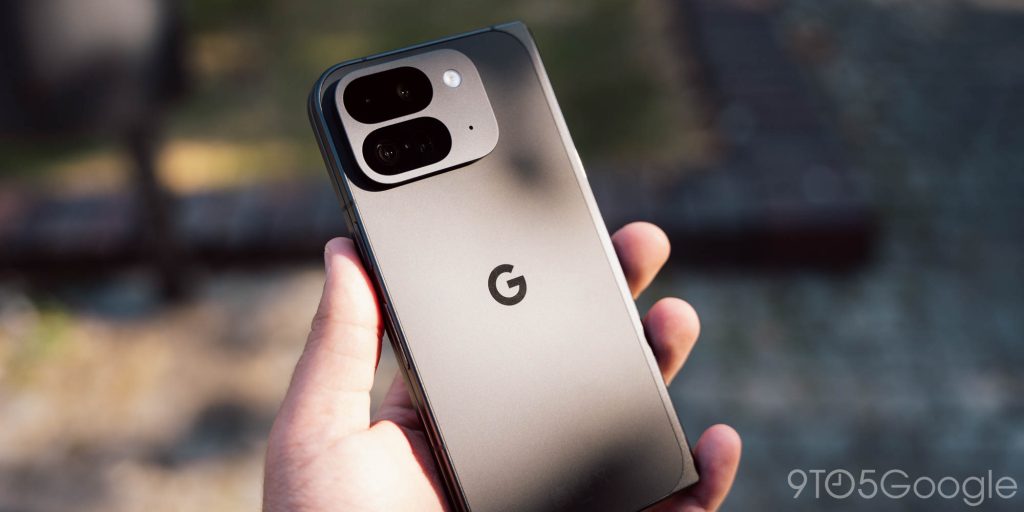
On the Pixel Fold, I asked the question of whether or not the downsides of Tensor were still acceptable on an $1,800 foldable. That’s still an important question, but one that’s more personal this year.
In terms of experience, unless you’re playing the highest of high-end games, you probably won’t notice any real deficiencies with Tensor G4. You aren’t getting the “best of the best” on paper, but you’d probably never know it. Is that alright with you at this price point? It is with me, just because everything else is as good as it is.
Battey Life |
I still can’t believe how good it is
The other big improvement on the Pixel 9 Pro Fold thanks to Tensor G4 is the battery life, which is absolutely excellent. I’m regularly getting between four and six hours of screen time over 15-18 hours of active use, which is quite good for my personal usage – keep in mind that screen time metrics like these can vary wildly from person to person.
Another reason that metric will vary is based on how you’re using the screens. The inner display inevitably eats up a bit more power, but in my roughly 50/50 use of the two (on some days leaning even more on the inner panel), the results I’ve been getting from the battery have been beyond satisfactory. In fact, I’d go so far as to say this device has slightly better battery life than the Galaxy Z Fold 6.
In my testing, the battery life on Pixel 9 Pro Fold is roughly on par with what I was seeing on the Pixel 9 Pro XL, despite the slab phone having a bigger battery.
Genuinely, I can’t believe the battery life is as good as it is, especially considering the battery size is actually smaller than the previous generation.
The charging problem
But the good battery life is somewhat offset by a frustrating charging situation.
To start, wired charging is much slower than the Pixel 9 Pro XL. Where that device can draw up to 37W of charging speed, the Fold is limited to 21W in our testing with a voltage meter – Google has also confirmed that’s the peak speed. That’s even lower than the 27W available on the base Pixel 9, which is quite a shame on a high-end device like this.
The other issue is wireless charging. It’s limited to a mere 7.5W because the Pixel 9 Pro Fold doesn’t work with the Pixel Stand 2 at all. This prevents the foldable for getting the boosted speeds, but the original didn’t get those either. The problem I’ve found is that it’s not just the Pixel Stand that’s the problem. Many stand-style wireless chargers barely work, while mat-style chargers can also be a little inconsistent. This all comes down to a too-low placement for the Qi charging coil. You’ll also want to be wary of MagSafe-style cases for this device, as nearly all of the ones I’ve seen on the market so far don’t line up properly.
If you’re buying a Pixel 9 Pro Fold and want a reliable wireless charging stand, I can confirm the Nomad Base Station Stand (3rd Gen) works flawlessly.
Cameras |
One of the best foldable cameras is also one of the worst on a Pixel
Continuing on the theme of where the Pixel 9 Pro Fold differs from the Pixel 9 Pro and Pro XL, there are the cameras. The hardware here is completely different and it shows.
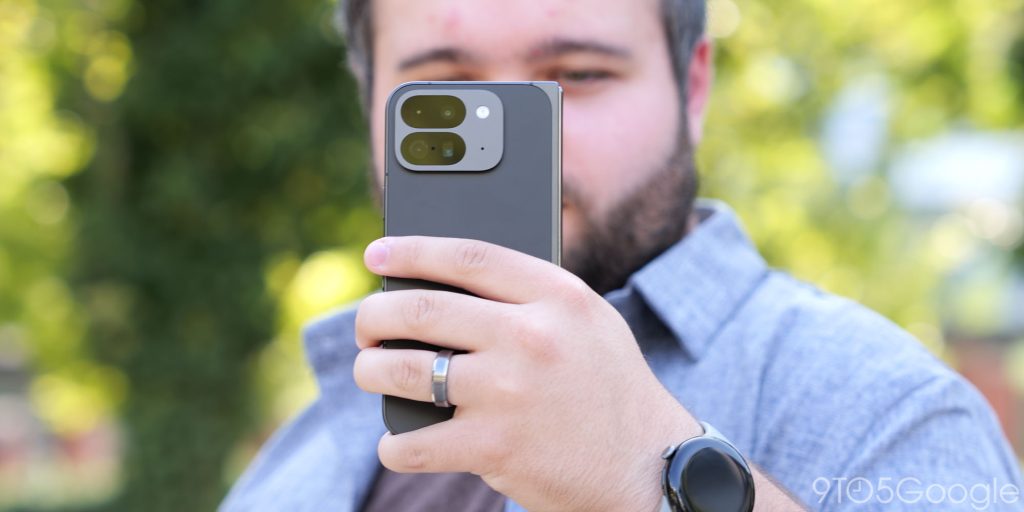

The 48MP main sensor is physically smaller than the one in the rest of Google’s Pro phones, and also captures less light. This often leads to missing details in lower light, and overall just less pleasing shots. On the bright side, you do still get a 5x telephoto lens, something often lacking on foldable.
The Pixel 9 Pro Fold is still a capable and consistent camera thanks to Google’s software processing, but the gap in quality has never been as obvious as it is this year.
In the realm of foldable phones, Google is on the better end of what’s available. Again, the Pixel’s software results in shots from this device being consistently solid, with often contrasty looks and enough detail especially in good lighting, as well as capable low-light performance through Night Sight. This year, there’s also the addition of Night Sight Video and Video Boost, both of which make this device far more capable in the video department as long as you’re willing to wait for the processed clips to be delivered through Google Photos.
Full-size samples on Google Photos
By no means whatsoever is the camera on the Pixel 9 Pro Fold bad, it’s just not as good as the rest of the lineup. You’re not getting a camera as good as the base Pixel 9, nor are you getting one as good as even last year’s Pixel 8 duo. The best comparison, crazy as it seems, is the Pixel 8a.
Sadly, this is the worst camera on a flagship Pixel today in a noticeable way, but it’s equally one of the best cameras you’ll find on a foldable smartphone today.
Tidbits |
Official case
Google’s official Pixel 9 Pro Fold case is a wonderful example of how foldable cases have improved. It has a thin profile, is grippy without getting stuck in your pocket like last year’s case, and doesn’t overuse adhesive for the front panel. I’ve been using the “Porcelain” case with the black Fold, and it’s a great look. The white case has also held up well and not yet stained in the few weeks I’ve been using it.

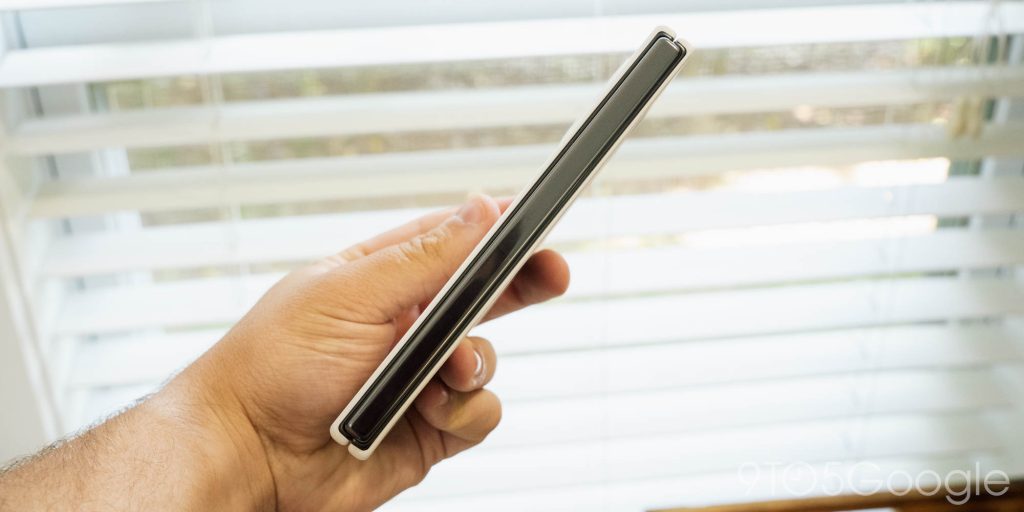
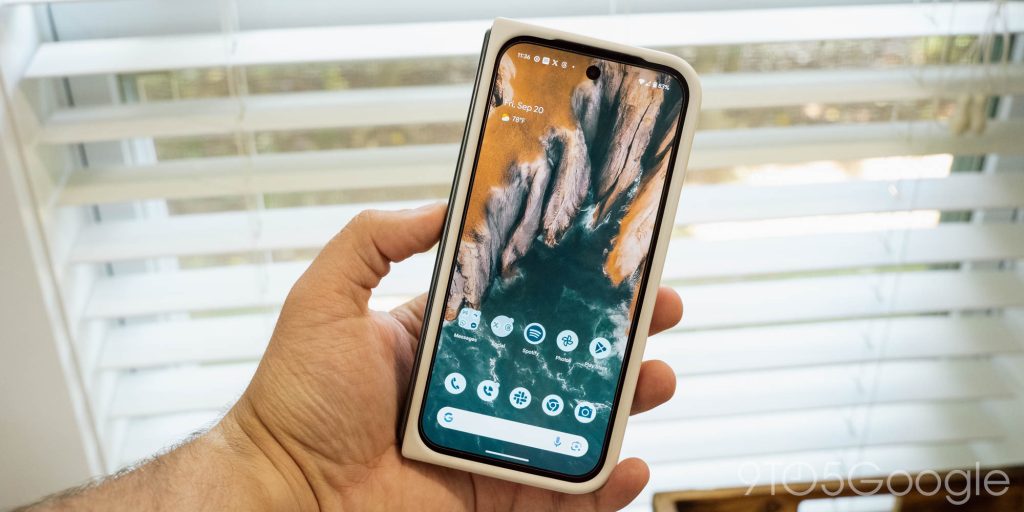

Haptics
Vibrations on the Pixel 9 Pro Fold are just as good as they are on any other Pixel 9, which is to say they’re rather good. I’m just so sad that Google removed the delightful little vibration that comes when you open the foldable. Those are the kinds of little touches that sets Google’s experience apart, and it’s just gone.
Fingerprint sensor & face unlock
The Pixel 9 Pro Fold uses a side-mounted fingerprint sensor built into the power button. It’s a little less consistent (at least for me) than the ultrasonic in-display fingerprint sensor in the rest of the Pixel 9 series, but it’s the only way to implement a fingerprint sensor into this form factor without having more than one.
I’ve also been using that sensor a whole lot less this year thanks to the arrival of Face Unlock. Both selfie cameras work with this feature and it’s reliable and fast. This is camera-based, so in theory it’s not the most secure form of biometrics out there, but it’s well-implemented and has proven trustworthy since Google first debuted it on the Pixel 8 series last year.
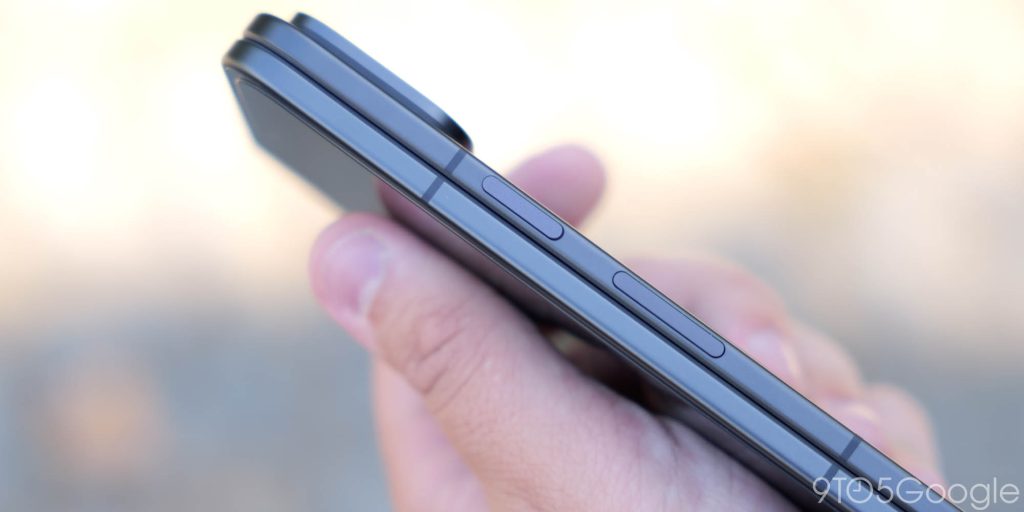
Is it really a Pro?
One of the core questions around the Pixel 9 Pro Fold is right there in its name – “Pro.” Is this really a Pro phone in Google’s lineup?
It has worse cameras, lacks a “Super Actua” outer display, has slower charging both wired and wireless, and lacks some features of the main Pro phones too, like 8K Video Boost, Dual Exposure on the main camera, Action Pan, and Cinematic Blur.
I’d argue that, on the whole, the title is earned through the rest of the package. You’re mainly losing out on camera features as a result of hardware limitations of a foldable, but you’re still getting the same utility out of the camera as well as the 16GB of RAM that helps set the 9 Pro apart from the base Pixel 9.

Google has never had a great argument for making its “Pro” phones “pro” outside of slapping a higher-resolution display and a telephoto camera anyway, so I’d argue there are bigger fish to fry throughout the lineup, like the fact that this phone should just be called “Pixel Fold 2” in the first place. But, understandably, it is a little frustrating to consider buying Google’s most expensive phone, only to have to give up on some of the things that make the other two Pro phones so good.
Final Thoughts |
Not just a stunning improvement, perhaps the best you can get*
The Pixel 9 Pro Fold is what it seems the market has been waiting for since the beginning. Since Samsung’s original Galaxy Fold customers have cried out for a device that’s as thin as a normal phone, has the same display as a normal phone, and has the same camera as a normal phone. The Pixel 9 Pro Fold is as close as we’ve come, at least outside of China, to that goal.
That’s where the asterisk falls in. The Pixel 9 Pro Fold is the best foldable that most people can get, but it’s not the best one out there. As mentioned, the Honor Magic V3 and many other foldables available today in China give Google’s efforts a run for their money in more ways than one, but Google has put out a solid showing here to the point where I think this might be the best foldable available today. Between software, camera, and the form factor and build quality, it’s a package that’s genuinely tough to rival.

In the US, the Pixel 9 Pro Fold only has two competitors – the OnePlus Open and the Galaxy Z Fold 6. Compared to the OnePlus Open, Google has better-feeling hardware, a more consistent camera, and cleaner software, where the Open benefits from better overall hardware, more raw horsepower, faster charging, and a slightly lower price. But the bigger competitor is the Galaxy Z Fold 6, which is the established name in this space and the one with all of the marketing dollars behind it. On a hardware level, there’s no competition. The Pixel 9 Pro Fold is a better foldable than the Galaxy Z Fold 6, full stop. Samsung’s only advantage is dealing with any issues with that hardware, as the company has had six years to build out repair options and systems. Google also has a better camera and better battery life, while Samsung has better multitasking in the software and stylus support.
So, really, comparing these devices comes down to your priorities. If you want a phone with clean software, a reliable camera, good battery life, and hardware that feels “normal,” I think the Pixel 9 Pro Fold is a no-brainer. The main reason to get a Galaxy Z Fold 6 over it, in my eyes, comes down to Samsung’s repair system and trade-in values, where the Open’s main appeal is, well, hard to find when directly compared to the Pixel.
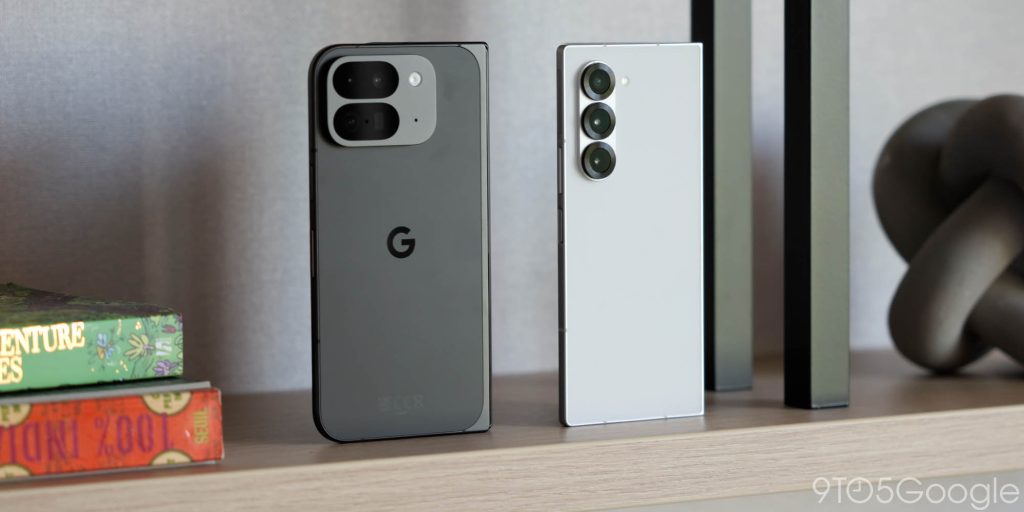
The Google Pixel 9 Pro fold balances the needs of a phone with the utility of a foldable better than most devices, all while retaining the best parts of a Pixel for a wonderful, if still expensive experience.
Is the Pixel 9 Pro Fold is a perfect foldable?
No!
I don’t think that truly exists yet, and it might never happen if we’re being honest. Foldables are increasingly a product built to serve a niche that no one knows quite how to define. That’s why having differences in the various options on the market makes so much sense.
The Pixel 9 Pro Fold’s strength is that it appeals to the broader market, not just the people who were interested in this niche from day one. This is the first foldable, in most markets, that just appeals to the idea of having a normal phone that opens up to reveal a huge display inside, and I suspect that’s something that a lot of people have been waiting for.
Truly, the Pixel 9 Pro Fold is the best foldable for most people, at least in my eyes.
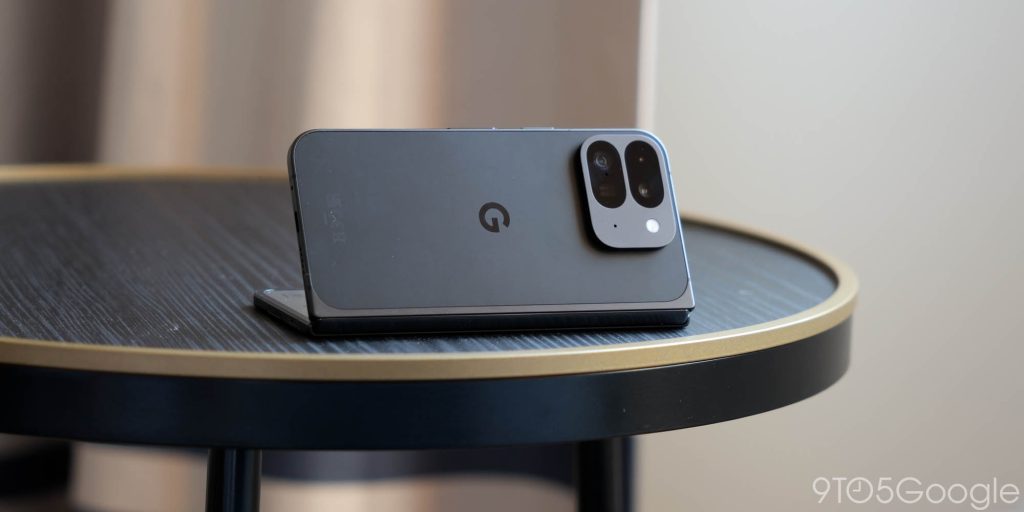
The only part it doesn’t fulfill is dropping the price, which remains at $1,799. Comparing to other options, this is a good a value as you’ll find, but like everyone else, I can’t wait for the day where these devices are a whole lot cheaper.
Where to buy the Pixel 9 Pro Fold
FTC: We use income earning auto affiliate links. More.
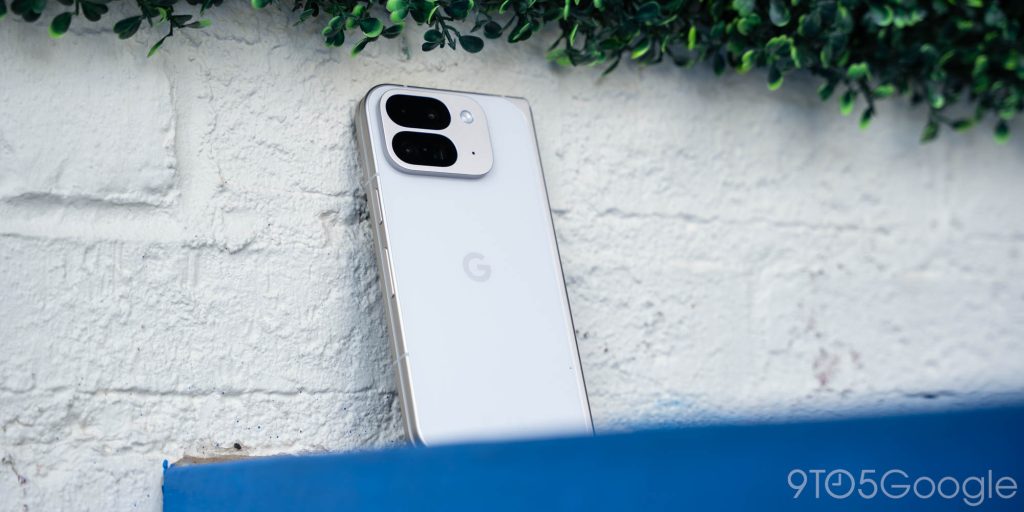
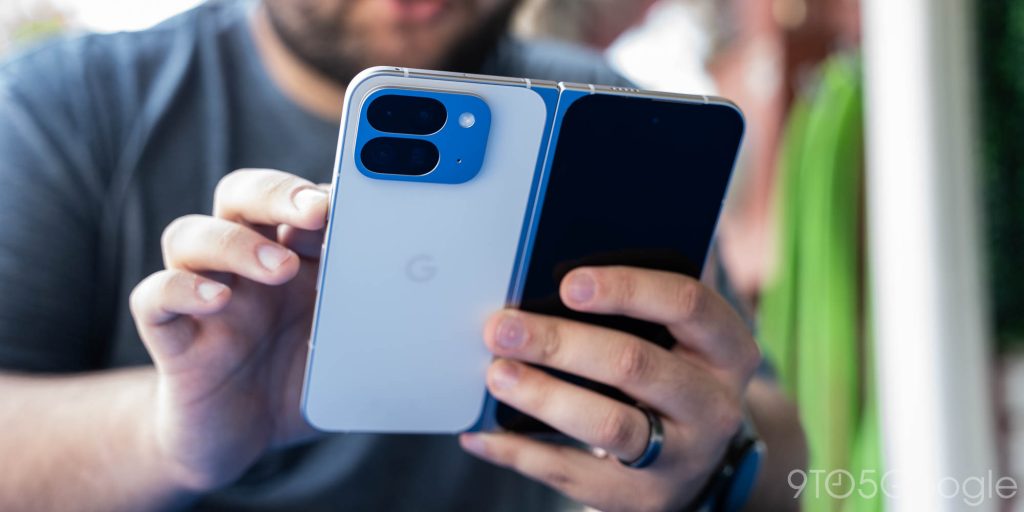
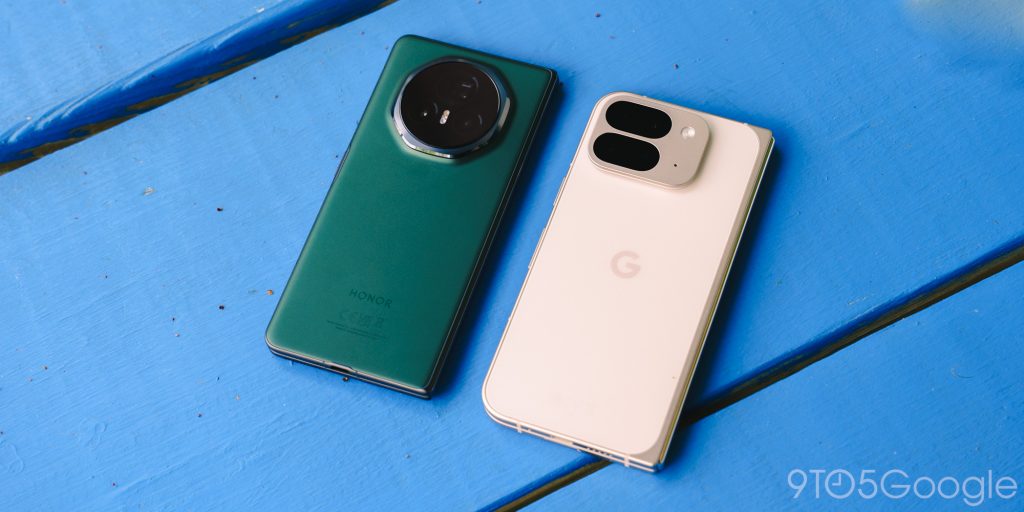
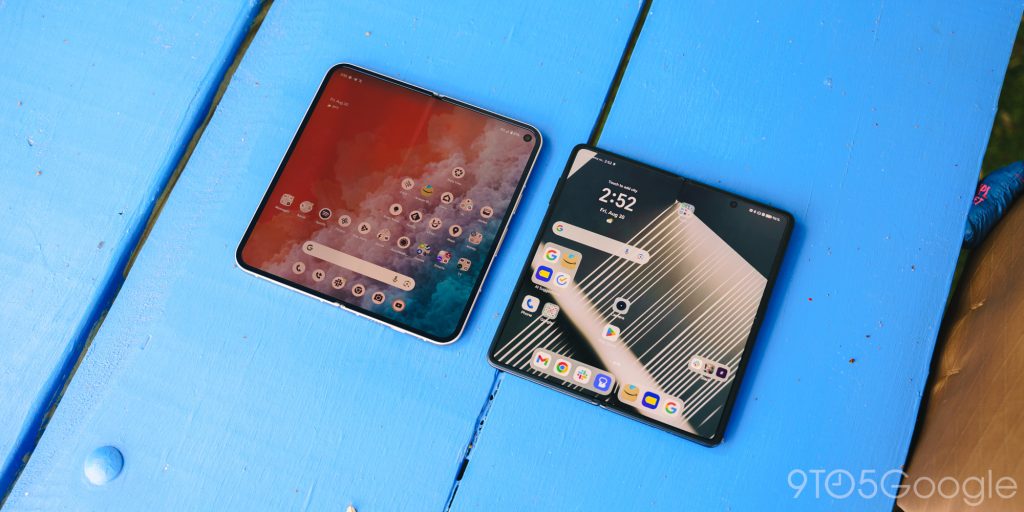
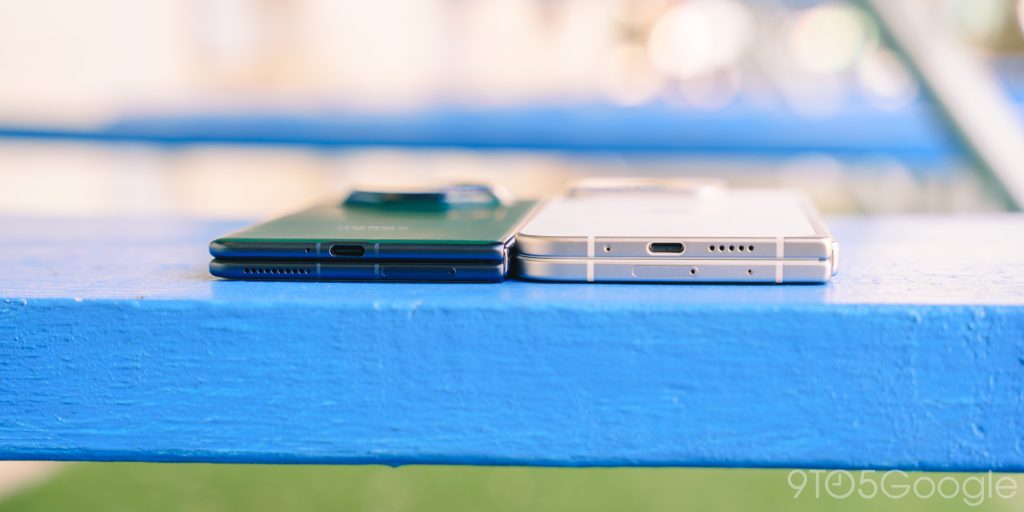
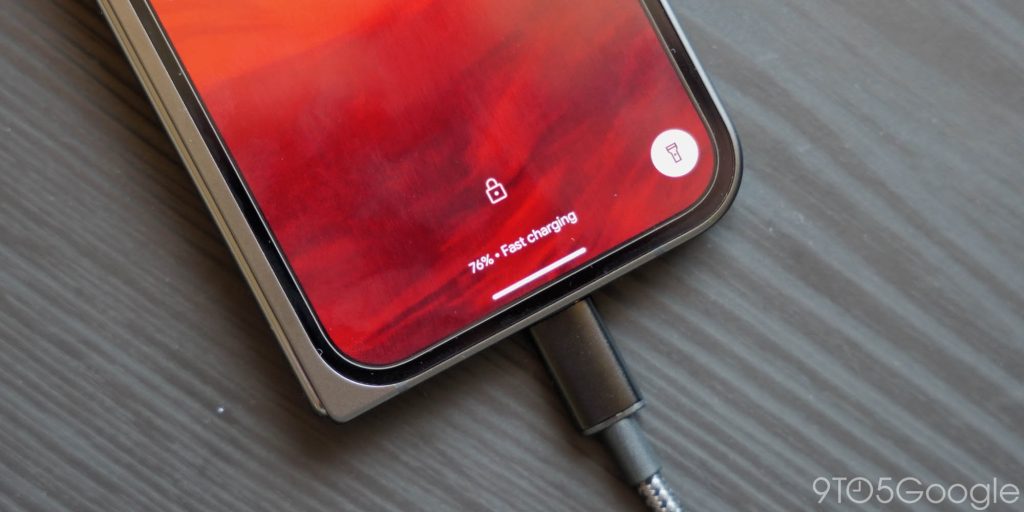
















Comments